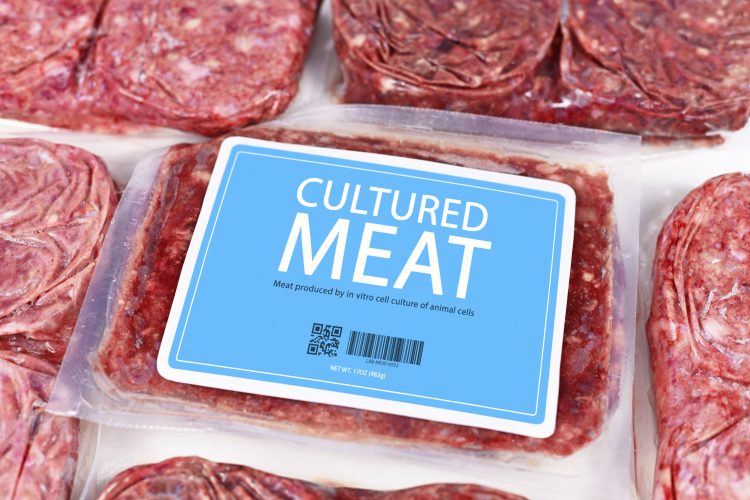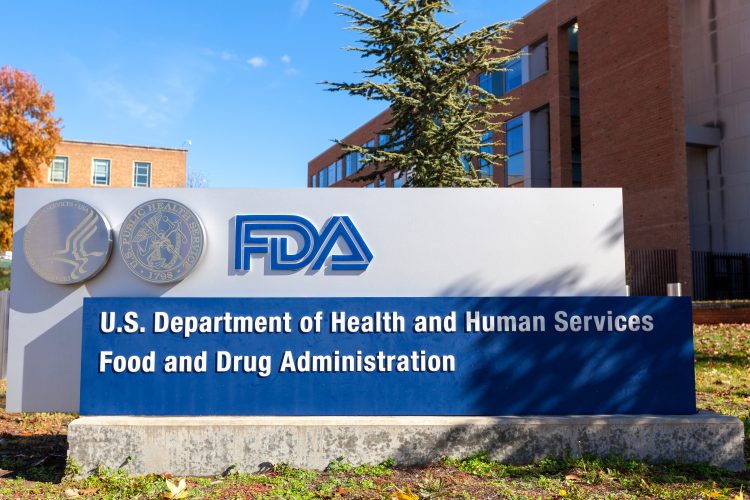One step closer to a store or restaurant near you: cultured meat regulation
- Like
- Digg
- Del
- Tumblr
- VKontakte
- Buffer
- Love This
- Odnoklassniki
- Meneame
- Blogger
- Amazon
- Yahoo Mail
- Gmail
- AOL
- Newsvine
- HackerNews
- Evernote
- MySpace
- Mail.ru
- Viadeo
- Line
- Comments
- Yummly
- SMS
- Viber
- Telegram
- Subscribe
- Skype
- Facebook Messenger
- Kakao
- LiveJournal
- Yammer
- Edgar
- Fintel
- Mix
- Instapaper
- Copy Link
Posted: 18 November 2021 | Bryant M Godfrey | No comments yet
Bryant M. Godfrey assesses the current state of cultured meat regulation in the US, and explains why regulation is well in advance of production when it comes to cellular meat.


Where is cultured meat regulation in the US at present?
As a society, we are fortunate to have many choices in the types of food we would like to consume — whether specifically labelled as “organic,” “natural,” “free-range,” “GMO or non-GMO, ”locally grown,” or “grass-fed.” Adding to this, certain consumers may also value being environmentally conscious in their food decisions, especially in the case of cattle-derived food where methane gas emissions are adding to the total output of greenhouse gases in the environment.1 While others may value cruelty-free food offerings.
But, do US consumers have the appetite for a new type of food—meat or seafood—with its own unique identification – “cell-cultured meat or seafood”/”cell-based meat or seafood”/”cultured meat or seafood?” Well, we may be closer to an answer than once imagined.
Whether referred to as cell-cultured, cell-based, cultured, or some other derivative, all of these terms refer to meat or seafood grown in a controlled environment based off a five-phase process. The phases are biopsy, cell banking, growth, harvesting and food processing.2 In the biopsy phase, a sample of cells are extracted from the tissue of the animal of interest – a process that does not harm nor require the slaughter of the animal.
So where is it?
Although no US-based firm is currently engaged in the commercial production of cell-cultured meat or seafood, several firms are actively engaged in research and development, positioning this product closer to market entry. Similarly, two key regulators — the US Food and Drug Administration (FDA) and the United States Department of Agriculture (USDA) and its Food Safety and Inspection Service (FSIS) — have undertaken several actions to ready themselves for these products.
On March 7, 2019, the FDA and the USDA-FSIS entered into a formal agreement, the purpose of which describes the intended roles of each agency with respect to the oversight of human food produced using animal cell culture technology, derived from cell lines of USDA-amenable species and required to bear a USDA mark of inspection.3 Under the agreement, FDA will, in pertinent part, (with respect to meat and poultry specifically regulated by the USDA where cell culture technology will be utilised):
- Conduct premarket consultation processes to evaluate production materials/processes and manufacturing controls, to include oversight of tissue collection, cell lines and banks, and all components and inputs;
- Oversee initial cell collection and the development and maintenance of qualified cell banks, including by issuing regulations or guidance and conducting inspections, as appropriate;
- Oversee proliferation and differentiation of cells through the time of harvest, including by issuing regulations or guidance and conducting inspections, as appropriate;
- At harvest, help coordinate the transfer of regulatory oversight to USDA-FSIS;
- Ensure that covered entities comply with applicable FDA requirements, including facility registration, Current Good Manufacturing Practices and preventive controls, and requirements applicable to substances that become a component of food or otherwise affect the characteristics of food;
- Conduct appropriate inspections and follow-up activities, including taking enforcement action if necessary, to ensure that cell bank and cell culturing facilities are in compliance with FDA’s applicable laws and regulations.


The FDA is working with the USDA to regulate cultured meat
USDA-FSIS will, in pertinent part:
- At harvest, help coordinate the transfer of regulatory oversight from the FDA, including, but not limited to, reviewing information necessary for USDA to determine whether harvested cells are eligible to be processed into meat or poultry products that bear the USDA mark of inspection;
- Carry out inspections at establishments where cells derived from livestock and poultry are harvested. These establishments will be required to have USDA grants of inspection and meet the USDA-FSIS regulatory requirements, including the requirements for ensuring sanitation and developing and implementing Hazard Analysis and Critical Control Points systems;
- Ensure that cell-based products are labelled truthfully and consistent with coordinated FDA and USDA-FSIS joint principles for product labeling and claims;
- Require that the labelling of human food products derived from the culture cells of livestock and poultry be preapproved and then verified through inspection, as required by FSIS regulations.
- Conduct enforcement action, as necessary, to ensure that adulterated or misbranded human food products derived from cultured livestock and poultry cells do not enter or are removed from commerce.
In addition to this formal agreement, both agencies have hosted public meetings on the use of animal cell technology to produce foods,4 and have also engaged in information seeking activities by publishing in the Federal Register a request for information (RFI-FDA) and an advanced notice of proposed rulemaking (ANPR-FSIS) on the subject matter as well.5 In particular, as part of FDA’s July 18, 2018 public meeting, the agency invited input, relevant data, and information on:
- What kinds of considerations specific to animal cell culture technology would be appropriate to include in evaluation of food produced by this method of manufacture;
- What kinds of variations in manufacturing methods would be relevant to safety for food produced by animal cell culture technology;
- What kinds of substances would be used in the manufacture of foods produced using animal cell culture technology and what considerations would be appropriate in evaluating the safety of these issues;
- Are the potential hazards associated with production of foods using animal cell culture technology different from those associated with traditional food production/processing;
- Is there a need for unique controls measures to address potential hazards associated with the production of foods using animal cell culture technology?6
As part of FDA’s and USDA-FSIS’s October 23-24, 2018 joint public meeting, both agencies made presentations on their roles and responsibilities relative to the production and labelling of safe and wholesome food and their respective regulatory frameworks, including their inspection systems, as a basis for discussing what oversight framework might be most appropriate for cell cultured foods derived from livestock and poultry.7
FDA’s request for information, on October 7, 2020, invited comments, data, and other evidence about the names or statement of identity for foods comprised of or containing cultured seafood cells, consumer understanding of terms that have been suggested for the names or statements of identity of foods comprised of or containing cultured seafood cells; and how to assess material differences between these foods and conventionally produced foods.8
FSIS’s September 3, 2021 ANPR asked several questions related to the nomenclature associated with cultured meat and poultry, the potential establishment of a standard of identity for foods comprised of or containing cultured animal cells, whether to change any of the current regulatory definitions to include such products, labelling claims for these products; and research on consumer perceptions of food made using animal cell culture technology.
Paving the way
All of these efforts support the careful positioning of these agencies to begin the regulation of these products well in advance of them hitting the US marketplace. Companies and/or individuals interested in having a say in the regulatory process concerning cell-cultured products should consider providing comments, data, and evidence to the public dockets open to receive feedback.
Once these products eventually make it to the US market, companies should be aware of enforcement and litigation risks. Similar to other food products, we should expect active enforcement by USDA and FDA with respect to their respective areas of authority and expertise. Litigation risks most likely will exist in two areas—intellectual property and advertising/marketing. In an effort to claim their spot in a competitive market, companies will likely seek various patent protections—including those related to the methods of production. With the existence of patents, comes the possibility of various claims of patent infringement. From a consumer perspective, informed choice will be key. Products with unclear labeling and promotional efforts not disclosing the cell-cultured origins of the resulting product will likely face consumer deception-type challenges.
References
- See United States Environmental Protection Agency, Global Methane Initiative, “Importance of Methane,” available here
- See United States Government Accountability Office, Report to the Chairwoman, Subcommittee on Labor, Health and Human Services, Education, and Related Agencies, Committee on Appropriations, House of Representatives, “Food Safety—FDA and USDA Could Strengthen Existing Efforts to Prepare for Oversight of Cell-Cultured Meat,” pages 9 – 11, available here
- Formal Agreement Between the U.S. Department of Health And Human Services Food and Drug Administration And U.S. Department of Agriculture Office of Food Safety, https://www.fsis.usda.gov/sites/default/files/media_file/2020-07/Formal-Agreement-FSIS-FDA.pdf
- 83 Fed. Reg. 28238 (June 18, 2018); 83 Fed. Reg. 46476 (September 13, 2018).
- 85 Fed. Reg. 63277 (October 7, 2020); 86 Fed. Reg. 49491 (September 3, 2021).
- See FDA’s Workshops, Meetings & Webinars on Food and Dietary Supplements, Public Meeting on Foods Produced Using Animal Cell Culture Technology, https://www.fda.gov/food/workshops-meetings-webinars-food-and-dietary-supplements/public-meeting-foods-produced-using-animal-cell-culture-technology.
- See FDA’s Workshops, Meetings & Webinars on Food and Dietary Supplements, Joint Public Meeting on the Use of Cell Culture Technology to Develop Products Derived from Livestock and Poultry, https://www.fda.gov/food/workshops-meetings-webinars-food-and-dietary-supplements/joint-public-meeting-use-cell-culture-technology-develop-products-derived-livestock-and-poultry.
- See 85 Fed. Re. 63277 (October 7, 2020).
About the author
Bryant Godfrey is a partner in Foley Hoag’s Washington, D.C. office, where he provides strategic regulatory advice to large pharmaceutical, medical device and biotech companies, start-ups, and trade associations. Having spent nearly a decade at the US Food and Drug Administration (FDA) in senior regulatory and policy roles, Bryant advises FDA-regulated companies on a broad range of FDA regulatory, policy, compliance, enforcement and strategic matters. He has a deep understanding of the issues that are of utmost importance to his clients, and he helps them to foster positive relationships with the Agency.
Related topics
Cultured Meat, Food Safety, Regulation & Legislation, retail, Sustainability
Related organisations
Foley Hoag, The US Food and Drug Administration (FDA), United States Department of Agriculture (USDA)









